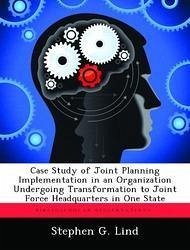The National Guard has been in a nearly constant state of change, in one form or another, since its inception. The events that have transpired since the attacks on the World Trade Center on 11 September 2001 demonstrated the need for the next major evolution of the National Guard. The National Guard began the process of transforming the State Military Headquarters in all 54 states and territories by converting from an Administrative and Oversight Headquarters to a Joint Operational Activity in 2003. This study investigates the changes brought about by the implementation of the joint planning process with relation to the transformation to Joint Force headquarters in California. It explores the impact of the joint planning process to current operational plans within California and the challenges and successes experienced during the process. In doing so, it focuses on the effects the JFHQ transformation process has had in California. One critical component to operating in a joint environment is the ability for the organization to conduct Joint Planning using the Joint Operation Planning and Execution System (JOPES) format. All of the existing plans for each state would have to be updated and converted to the JOPES format, adding to the challenges of learning a new planning format and training planners to use the new format. This study finds that resourcing has been the most significant challenge to the transformation process with regards to joint planning. The planning staff within the J-5 has suffered from a lack of sufficient personnel to conduct both strategic and operational planning simultaneously. Strategic planning has been extremely effective while operational planning has produced mixed results. Personnel within the joint staff have not been trained on the Joint Operations Planning Process (JOPP) which further hampers its operational planning capability.








